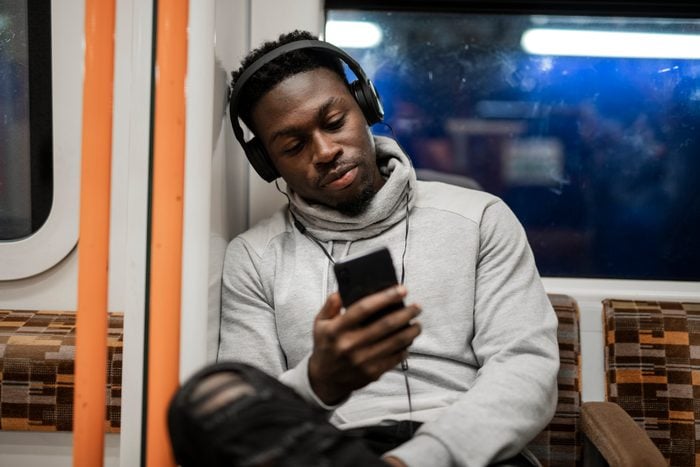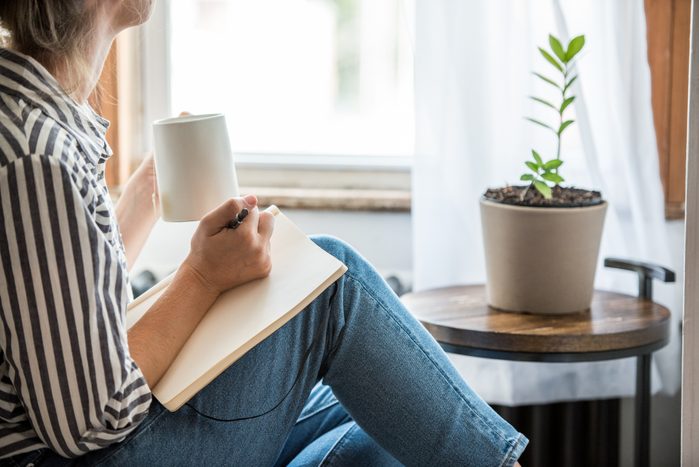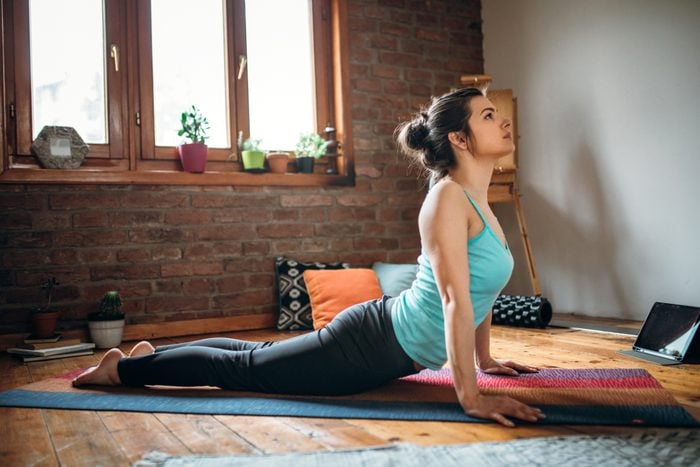
There’s nothing quite like a cozy night in—but if canceling plans, dodging errands, and steering clear of social engagements is becoming your new normal, mental health specialists say there are a few cautions against going into total hibernation mode. “It’s helpful to realize that avoidance is one of the biggest things that fuels anxiety,” explains Peggy Loo, PhD, a psychologist and director of Manhattan Therapy Collective. “The more we avoid something, the bigger it becomes in our minds—and ironically, the more mental and emotional energy it takes to manage in life.”
People with agoraphobia often have extreme difficulty overcoming this avoidance, as the condition is characterized by a fear of being in a place or situation from which they can’t escape. While this disorder affects a small percentage of the population, the coping mechanisms that aim to treat this fear can help manage a range of anxiety issues that may be holding you back from fully living your life.
Is it social anxiety or something more? Psychologists explain the main signs of agoraphobia

Cognitive behavioral therapy
Cognitive behavioral therapy (CBT) is a great approach for many types of anxiety disorders, says Dr. Loo. “It’s a hands-on, collaborative, and holistic approach with a tremendous among of research supporting its effectiveness.”
One of the main goals of CBT is to help someone identify exactly what’s causing them fear or anxiety, explains Tynessa Franks, PhD, a clinical psychologist. She says it’s about noticing someone’s tendency to disproportionately predict danger—and then, slowly but surely taking steps toward facing anxiety-inducing situations. “Engaging in feared situations allows a person to test their assumptions and predictions and to engage in new learning.”

Graded exposure
Graded exposure therapy is an approach that focuses on incremental steps toward a goal. “You start with addressing some of the smaller triggers for your [anxiety] through a realistic action plan,” Dr. Loo says. When you’re successful with the initial steps, you begin working on some of the larger triggers. “This approach is empowering as it helps you outline your goals, move at your pace, and build confidence by starting with small wins.”

Habituation
Our brains are always analyzing the risk-benefit of every situation we’re in—and there are times our brains get this analysis wrong, says Scott Gspandl, MD, a board-certified psychiatrist at OhioHealth Behavioral Health. “We perhaps think and thus believe that a catastrophic outcome is not just possible, but likely.”
Habituation is a process that aims to reduce this leap to assume the worst. If someone has significant anxiety about a certain situation or place, he says, ultimately returning to that scenario is a crucial part of overcoming the anxiety because it helps to train the brain to better approximate an appropriate risk-benefit calculation. “In doing so repeatedly, our body’s automatic response to the situation or environment becomes increasingly reduced.”
Re-entry anxiety is super normal right now–here’s how others relate

Flooding
Flooding is a type of exposure therapy that’s “more of an all-or-nothing approach where an individual marks a commitment to increase their environmental exposures,” Dr. Gspandl says. This involves making targeted, specific goals, such as leaving the house every day for a week or committing to going to social events for just 30 minutes. The goal of this strategy is to reduce someone’s anxiety and fear through repeated, controlled exposure, ultimately decreasing their avoidance urge, according to the American Psychiatric Association.
Get The Healthy @Reader’s Digest newsletter for the latest in health and wellness every day

Workbooking
Analyzing, identifying, and reflecting on what causes you to be anxious is essential to overcoming what’s holding you back. “If a person isn’t ready or able to pursue professional help, engaging in self-help is also an option,” says Dr. Franks. She recommends the workbook Mastery of Your Anxiety and Panic: Workbook (Treatments That Work), a step-by-step program based on the principles of CBT.
Gratitude journals are powerful reflection tools, too—and here’s how experts say to do it

Self-care
“Since anxiety is often focused on fears about future events, engaging in activities that help you stay present-focused, even if for a short time, are a good option,” Dr. Franks says.
Self-care may look different from one person to the next, but the general priority is to “take in the full experience—focusing on one thing at a time,” she says, instead of eating or scrolling on your phone while also engaging in other activities (or worries).
Here’s how to build your custom self-care plan, according to experts
For a daily dose of the latest in mental health and wellness, follow The Healthy on Facebook, Instagram, and Twitter. Don’t miss out on:
- What Are the Heart-Healthiest Foods? A Cardiologist Just Opened Her Fridge to Reveal Them
- Lindsey Vonn Gets Candid about a 10-Year Health Struggle: “The Stress Made It Even Harder”
- Can’t Sleep? A New Study Found This Solution Was More Powerful Than Melatonin
- 5 Science-Backed Reasons Volunteering Is Actually a Powerful Way to Feel Healthier
